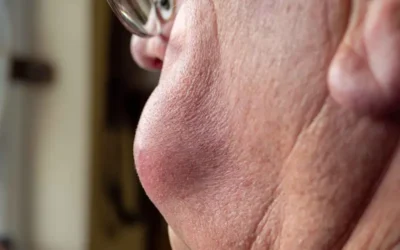On October 1, 2017, practice management and electronic health record systems updated the code sets for pain medicine. New ICD-10 codes in 2018 allow pain physicians and medical coding outsourcing companies to report spinal stenosis with a higher level of specificity and to describe substance abuse in remission. There are also revisions to CPT codes for pain management this year.
- ICD-10 Code Changes for Pain Medicine
- Revision to Lumbar Spinal Stenosis ICD-10 code M48.06: Lumbar spinal stenosis occurs when the spinal nerves in the lower back are choked. Symptoms include leg pain (sciatica) leg pain with walking (claudication), and tingling, weakness or numbness that radiates from the lower back into the buttocks and legs.
Starting October 1, 2017, M48.06 (spinal stenosis, lumbar region) was expanded to describe the condition with and without neurogenic claudication. Neurogenic claudication, according to the Deuk Spine Institute, is “pain and cramping in the legs or pain and cramping in the buttocks due to narrowing of the spinal canal in the lumbar region or lumbar spinal stenosis causing compression of the nerve root”.
For greater specificity, M48.06 has been replaced with two new diagnosis codes:
- M48.061 Spinal stenosis, lumbar region without neurogenic claudication
- M48.062 Spinal stenosis, lumbar region with neurogenic claudication
- Additions to ICD-10 Codes for Mental, Behavioral and Neurodevelopmental Disorders: The classification of mental disorders in ICD-10 is as follows:F00-F09: Organic, including symptomatic, mental disorders
F10-F19: Mental and behavioural disorders due to psychoactive substance use
F20-F29: Schizophrenia, schizotypal and delusional disorders
F30-F39: Mood [affective] disorders
F40-F48: Neurotic, stress-related and somatoform disorders
F50-F59: Behavioral syndromes associated with physiological disturbances and physical factors
F60-F69: Disorders of adult personality and behaviour
F70-F79: Mental retardation
F80-F89: Disorders of psychological development
F90-F98: Behavioural and emotional disorders with onset usually occurring in childhood and adolescence.
As of October 1, 2017, the code block F10-F19 (Mental and behavioral disorders due to psychoactive substance use) has expanded descriptors and new codes to describe substance abuse in remission. Nine new codes allow the physician to report the stage of the patient’s substance abuse and recovery:
- F10.11 Alcohol abuse, in remission
- F11.11 Opioid abuse, in remission
- F12.11 Cannabis abuse, in remission
- F13.11 Sedative, hypnotic or anxiolytic abuse, in remission
- F14.11 Cocaine abuse, in remission
- F15.11 Other stimulant abuse, in remission
- F16.11 Hallucinogen abuse, in remission
- F18.11 Inhalant abuse, in remission
- F19.11 Other psychoactive substance abuse, in remission
Additions to subcategory G12.2 (motor neuron disease): ICD code G12.2 (motor neuron disease) is a non-billable code. Diagnosis of this type is coded using codes that describe the diagnosis ‘motor neuron disease’ in greater detail such as:
- G12.20 Motor neuron disease, unspecified
- G12.21 Amyotrophic lateral sclerosis
- G12.22 Progressive bulbar palsy
- G12.29 Other motor neuron disease
In 2018, ICD-10 code G12.2 (motor neuron disease) includes new codes to identify additional specific conditions:
- G12.23 Primary lateral sclerosis
- G12.24 Familial motor neuron disease
- G12.25 Progressive spinal muscle atrophy
- CPT Code Changes for Pain MedicineFor CPT 2018, the changes to pain medicine include revisions to existing descriptors to clarify the appropriate use of the codes.
- Revision of code 64550: CPT 2018 has revised 64550 by adding guidelines to indicate that the code should be used for any anatomic site. CPT code 64550 was also revised to include a TENS unit as an example of a transcutaneous neurostimulator as follows:64550 Application of surface (transcutaneous) neurostimulator (e.g., TENS unit)
- Deletion of chest x-ray codes: Nine chest x-ray codes have been deleted:
- 71010 Radiologic examination, chest; single view, frontal
- 71015 … stereo, frontal
- 71020 Radiologic examination, chest, 2 views, frontal and lateral
- 71021 … with apical lordotic procedure
- 71022 … with oblique projections
- 71023 … with fluoroscopy
- 71030 Radiologic examination, chest, complete, minimum of 4 views
- 71034 … with fluoroscopy; and
- 71035 Radiologic examination, chest, special views (e.g., lateral decubitus, Bucky studies)
- Four new codes: The deleted chest x-ray codes have been replaced by 4 new CPT codes which are based exclusively on the number of views:
- 71045 Radiologic examination, chest; single viewv
- 71046 … 2 views
- 71047 … 3 views; and
- 71048 … 4 or more views
- Revision to code 76000: The deletion of CPT codes 71023 and 71034 (describing chest x-ray with fluoroscopy) led to the revision to code 76000 Fluoroscopy (separate procedure) as follows:
-
- 76000 Fluoroscopy (separate procedure), up to 1 hour physician or other qualified health care professional time
The descriptor for 76000 no longer includes “other than 71023 or 71034 (e.g., cardiac fluoroscopy)”
-
- Revisions to codes 80305-80307: Codes 80305-80307 include language that identifies elements common to each of these codes.
- 80305 Drug testing, direct optical observation
- 80306 Drug testing, instrument assisted
- 80307 Drug testing, instrument analyzed
The American Academy of Pain Physicians states that codes 80305-80307 were “editorially revised to comply with CPT conventions regarding common language among codes”. The change was made to simplify reporting of these codes by placing the common language before the semicolon in code 80305 as follows:
Previous description:
- 80305: Drug test(s), presumptive, any number of drug classes, any number of devices or procedures (e.g., immunoassay); capable of being read by direct optical observation only (e.g., dipsticks, cups, cards, cartridges) includes sample validation when performed, per date of service
Revised 2018 description:
- 80305 Drug test(s), presumptive, any number of drug classes, any number of devices or procedures; capable of being read by direct optical observation only (e.g., utilizing immunoassay [e.g., dipsticks, cups, cards, or cartridges]), includes sample validation when performed, per date of service
There could be many more codes of importance to pain medicine practices based on the services provided. Identifying these codes and reporting them correctly for optimal reimbursement would be much easier with help from an experienced pain management billing and coding company.



